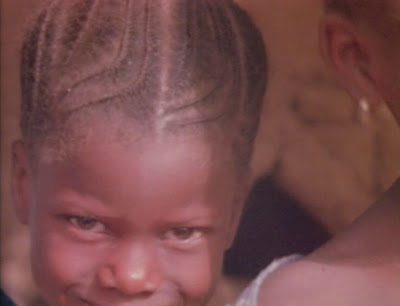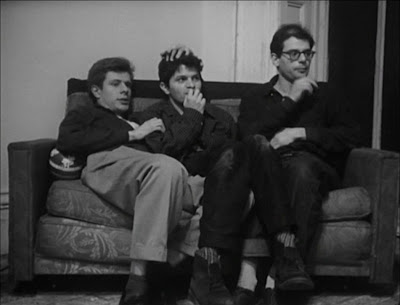




Reassemblage (1983) by Trinh T. Minh-ha was shot in Senegal, and features conventional, even touristy, footage of Fulani work and play. Village settings and activities such as food preparation, weaving, and blacksmithing comprise much of the action. Repeated scenes of women pounding grain conveys the endlessness of women's work. A series of close-ups of faces emphasizes the watchfulness of the ethnographer as the film nears its conclusion.
What makes Reassemblage so unusual and arresting is its editing, which mixes multiple jump cuts with unexpected moments of silence and fades-to-black. A spare, elliptical narration questions the purpose and objectivity of ethnographic filmmaking.



























